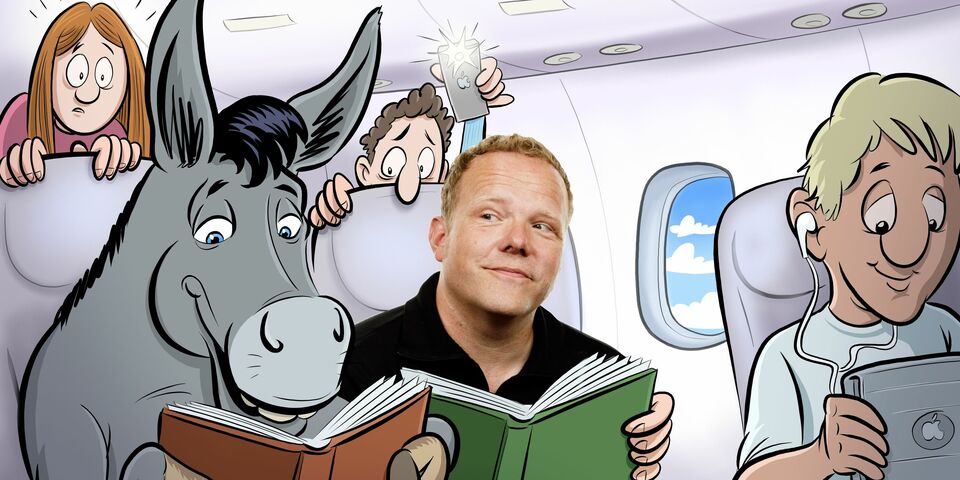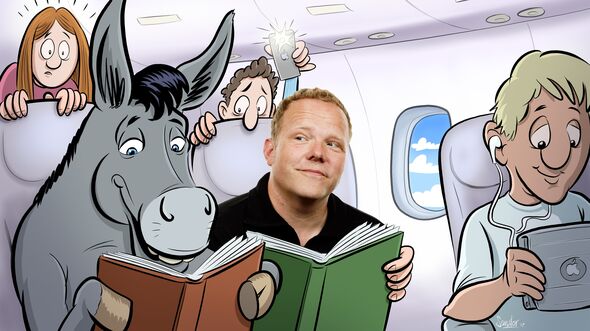Brainmatters | Travelling companions
Some years ago I gave an old friend a book by Robert Louis Stevenson as a gift: Travels with a Donkey in the Cévennes, published in 1879. In this literary classic in the donkey genre, Stevenson, known for writing Treasure Island and Dr Jekyll and Mr Hyde, gives an account of rambling through a rugged part of southern France accompanied by a mousy grey donkey “not much bigger than a dog”. My friend has a soft spot for donkeys (undoubtedly one reason why he tolerates having me in his life) and dreams of making such a trip.
As early as the early Middle Ages scholarly monks went travelling with a beast of burden - a donkey - to carry their books. These monks were the scientists of their time, although their message was not usually one of empirical knowledge and enlightenment, but one of revelation, fear of God, and devotion. Despite their prominent role in the Bible, donkeys fared rather badly in those days - they were thought to be dumb, stubborn and ugly animals, on occasion even evil.
Unjustly, since donkeys are in fact exceptionally friendly, curious and intelligent, and in bad weather or in difficult terrain, much more robust than horses. For its reputation for obstinacy, the donkey can thank the fact that it is not an animal with a flight instinct, like a horse. Instead, when fearful or stressed, a donkey will stand rooted to the spot. Yelling, tugging or a beating are all completely pointless - calm reassurance and aiming to regain the animal’s trust get the best results. Friendly, intelligent, headstrong, reliable but reacts poorly to pressure or force - this description brings to mind a couple of people I know personally.
Airbus instead of a donkey
Travel is also part of the job for today’s scientists. The donkey has been replaced (unfortunately) by a train or an Airbus, and the pile of books (also regrettably) by a laptop or iPad. Last week I was able to travel to Montreal in Canada, for the international CHI 2018 conference, a meeting of scientists and designers who study and design the interaction between people and computers.
When I say ‘computers’, you can forget the image of that black box with its desktop keyboard and screen, and think instead of smart robots, virtual reality, artificial intelligence, wearables, self-driving cars, e-Health apps, and so on. Some 3,500 people worldwide came together to share their knowledge, present their work, make research plans, or simply to catch up. TU/e, and especially the Department of Industrial Design, had a very strong presence with twelve full papers included in the program and many more workshops, demonstrations and case studies besides. An admirable achievement and one that earned much respect from our international colleagues.
Intellectually revived
I’m now back at home, physically a little drained by jetlag and sleep deficit, but intellectually revived. Despite the predominantly high quality of the presentations and papers, I nonetheless have the feeling that the real value of a journey like this lies not in knowledge, but in connection - the many fascinating and warm-hearted interactions with colleagues and friends. As Stevenson writes in the introduction to his Travels with a Donkey in the Cévennes: “But we are all travellers in what John Bunyan calls the wilderness of this world-all, too, travellers with a donkey: and the best that we find in our travels is an honest friend. He is a fortunate voyager who finds many. We travel, indeed, to find them.”
Wijnand IJsselsteijn | Professor of Cognition and Affect in Human-Technology Interaction



Discussion